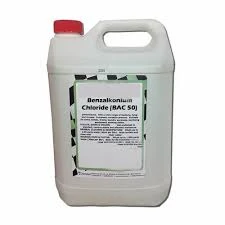corrosion & scale inhibitors
Corrosion and Scale Inhibitors Protecting Infrastructure and Enhancing Efficiency
Corrosion and scale formation are two significant challenges faced in various industrial sectors, from water treatment and oil production to energy generation and manufacturing. These phenomena can lead to detrimental effects on equipment and infrastructure, resulting in costly downtime, maintenance, and replacement. Fortunately, corrosion and scale inhibitors present effective solutions to mitigate these issues, enhancing operational efficiency and prolonging the lifespan of vital machinery.
Understanding Corrosion and Scale
Corrosion is the gradual destruction of materials, usually metals, due to chemical reactions with their environment. It can lead to structural failures, leaks, and safety hazards. Corrosion is influenced by various factors, including humidity, temperature, and the presence of corrosive agents like salts or acids. On the other hand, scale formation occurs when dissolved minerals crystallize and precipitate on surfaces, particularly in water systems. This can lead to blocked pipes, reduced heat transfer efficiency, and increased energy consumption.
The Importance of Inhibitors
To combat corrosion and scale, industries often rely on inhibitors—chemicals that can slow down or prevent these destructive processes. Corrosion inhibitors form a protective layer on metal surfaces, shielding them from corrosive agents. Scale inhibitors, meanwhile, prevent the precipitation of minerals that lead to scale buildup. The selection and application of these inhibitors depend on the specific conditions and requirements of each industrial system.
Types of Corrosion Inhibitors
There are various types of corrosion inhibitors, each suited for different environments. For instance
1. Anodic Inhibitors These work by increasing the oxidation potential of the metal, making it less likely to corrode. Examples include chromates and nitrites, commonly used in cooling water systems.
2. Cathodic Inhibitors These decrease the rate of cathodic reactions (reactions that occur at the cathode during corrosion). Barium and strontium compounds are examples that are often utilized in oilfield applications.
3. Mixed Inhibitors These affect both anodic and cathodic reactions and can be advantageous in complex environments. Organic compounds like amines and phosphonates are common mixed inhibitors used in various applications.
corrosion & scale inhibitors

Types of Scale Inhibitors
Scale inhibitors can be categorized based on their action mechanism
1. Threshold Inhibitors These suppress scale formation at low concentrations, preventing crystals from growing by interfering with their growth process. Phosphate and polyacrylate compounds are commonly used threshold inhibitors.
2. Dispersants These chemicals help keep precipitated crystals suspended in water, preventing them from adhering to surfaces. They are often used in conjunction with other inhibitors.
3. Sequestering Agents These compounds bind to scale-forming ions (like calcium and magnesium) in solution, thus preventing them from crystallizing. Citric acid and polyphosphates are examples of sequestering agents widely used in water treatment.
Implementation and Best Practices
The successful implementation of corrosion and scale inhibitors requires thorough monitoring and control of system parameters. Key factors include pH, temperature, and the concentration of minerals or salts in the system. Regular testing and maintenance are crucial to ensure optimal performance and to adjust inhibitor dosages as needed.
Moreover, industries benefit from collaborating with chemical suppliers and experts who can provide tailored solutions based on their specific environments and challenges. Advanced formulations and innovative technologies continue to evolve, further enhancing the effectiveness of inhibitors and ensuring compliance with environmental regulations.
Conclusion
In conclusion, corrosion and scale inhibitors are indispensable tools in safeguarding industrial infrastructure and enhancing operational efficiency. By effectively managing corrosion and scale, businesses can minimize maintenance costs, extend the lifespan of their equipment, and operate in a more sustainable manner. With the ongoing innovations in this field, industries can look forward to even more effective solutions to combat these persistent challenges, ultimately ensuring safety and reliability in their operations.
-
The Ultimate Guide to Flocculants: Transforming Water TreatmentNewsNov.01,2024
-
Improve Your Water Treatment Solutions with PolyacrylamideNewsNov.01,2024
-
Enhance Your Water TreatmentNewsNov.01,2024
-
Empower You to Achieve the Highest Standards of Water QualityNewsNov.01,2024
-
Effective Scale InhibitorsNewsNov.01,2024
-
Discover the Power of Poly Aluminum Chloride in Water TreatmentNewsNov.01,2024





